India has witnessed the birth of hundreds of beautiful art forms, some of which have stayed on for generations. Here are 10 art forms that were recognised and given a GI Tag.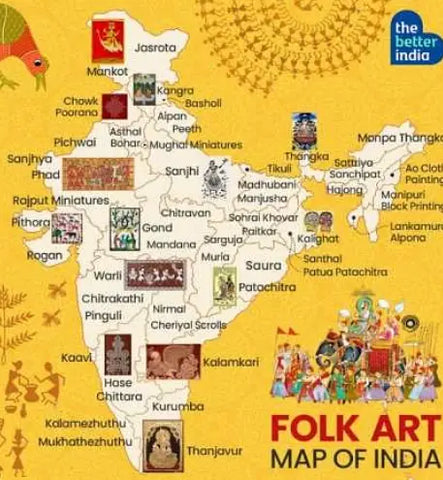
Did you know that we have art forms that date back to 2500 BCE? India has been a haven for traditional folk art forms that have been passed down from generation to generation. Some depict epic tales of gods and goddesses and some others portray the beauty of nature, but each is unique and significant in its own way.
With rapid growth and modernisation, these art forms have adjusted themselves to the taste of modern times, while maintaining their raw authenticity.
Here are ten traditional folk arts from different states that have stood the test of time and are here to stay.
Chowk Poorana
Native to Punjab and practised in states like Haryana, Himachal Pradesh and Uttar Pradesh, Chowk Poorana is an art form used to decorate floors and walls of the house during festivities. Made by using flour and rice, it is said to conjure the blessings of Goddess Lakshmi and ward off evil spirits.
The paintings are bright in colour and usually have motifs of flowers, leaves, ferns, peacocks and geometrical patterns.
Aipan
This GI-tagged art form belongs to the Kumaon region of Uttarakhand. It is used to decorate pieces of cloth, paper and the walls to adorn the god/goddess of the household. The decoration is usually done on important occasions like the birth ceremony, thread ceremony, weddings and death.
Traditionally done by hand, the art has evolved and is now seen on pots, wall hangings, posters, greeting cards etc.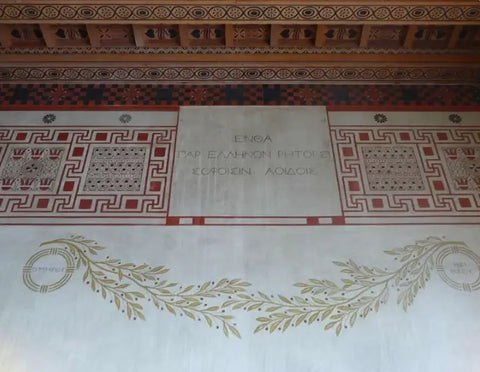
Aipan art belongs to the Kumaon region of Uttarakhand.
Kangra
Born in the beautiful landscapes of the lower Himalayan hills in the 18th century, Kangra is a pictorial art recognised by the government. This art form received a GI tag in 2012.
Named after Kangra, a former princely state in Himachal Pradesh, its central theme is around the Sringara Rasa, which depicts the stories of Radha and Krishna with picturesque imagery of nature and plants.
The art form, which saw a decline in its popularity, has managed to prevail with the efforts of the state government and the relentless work of the artisans.
Mughal miniature paintings
Contained in not more than a few square inches are Mughal miniature paintings, which detail illustrations of different events. Despite their tiny size, these paintings are extremely vivid and detailed with bright colours and soft brush strokes.
The art form is said to have emerged from Persian portraits but has its own unique features that set it aside. They depict very realistic scenes from legendary stories, hunting activities and royal life.
Miniature Mughal paintings depicting royal life.
Madhubani
Madhubani originated from Janakpur, which was the capital of ancient Mithila — present-day Bihar and Nepal region. Most of these paintings depict flora and fauna, women, gods and goddesses, geometrical patterns etc. It got recognition and a GI tag in 2007.
Madhubani paintings were rediscovered by the British after an earthquake in the 1930s. Also known as Mithila paintings, they mostly depict scenes from ancient tales or auspicious occasions. Traditionally painted on canvas, Madhubani art can now be found on various products like stoles, scarfs, sarees, bags etc and is sold worldwide.
Warli
Made by one of the largest tribes in India, Warli art is native to Maharashtra. It is considered one of the oldest art forms dating back to 2500 BCE. The art form also received a GI tag in 2011. The focal theme of Warli paintings started with nature and its elements and later moved on to depict everyday life.
The art form gained popularity because of its simplicity. It uses minimum tools to create beautiful motifs using simple lines, triangles, squares, circles and dots. Each symbol is said to have its significance. The process, for instance, represents the moon and the sun, while the square represents a sacred piece of land.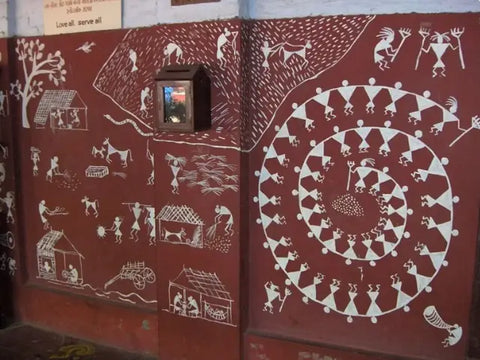
Kalamkari
Native to Andhra Pradesh, Kalamkari has two forms — Machilipatnam and Srikalahasti. Machilipatnam art form is block printed, whereas Srikalahasti is made with a free hand using a pen. Both forms received GI tags from the government in 2007.
This art form can be seen on temples, chariots and fabrics depicting tales from Indian epics like Mahabharat and Ramayana. The Mughals are said to be the first to patronise the art form, and it reached its peak in the middle ages. It became popular and spread to neighbouring states like Tamil Nadu. The paintings are beautifully crafted using bright colours and exquisite penmanship.
Gond
Often confused by the untrained eye with Madhubani paintings, Gond art is native to Madhya Pradesh and has spread across central India to places like Chhattisgarh and Odisha. Considered to be 1,400 years old, the art comes from the Dravidian word ‘Kond’, which means green mountain.
The art used to be practised by a tribal community that goes by the same name as the art. The paintings use vibrant colours like orange, green, yellow, red and blue. The main subject of Gond paintings is nature while taking inspiration from myths and legends in Indian epics. The images are primarily human and animal forms.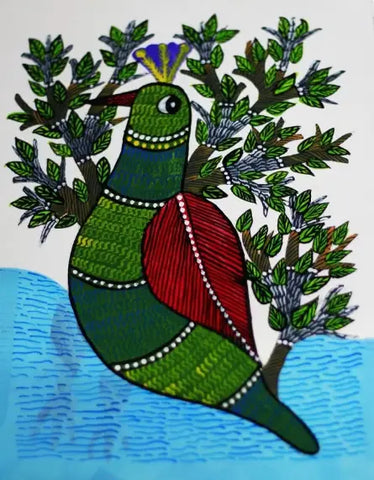
Rogan
Traditionally used to embellish a bride’s dress, Rogan art was born in Kutch, Gujarat, around 400 years ago.
The art is made using a flat iron rod with beautiful bright colours like orange, red and blue. To make the colours, castor seeds are manually pounded to extract oil. The oil is then boiled to create a paste, combined with coloured powder and diluted in water.
Rogan art has geometrical patterns, birds and flowers and is usually painted on rugs, sarees, scarves, etc.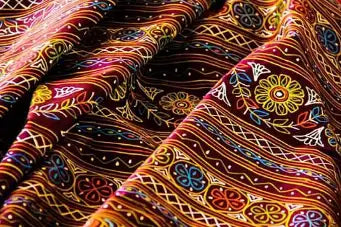
Thanjavur Paintings
Thanjavur paintings are a classical South Indian art form which originated in the town of Thanjavur in Tamil Nadu and soon spread to the neighbouring states. The government of India gave it a GI tag in 2008.
What makes it unique is the detailed work with an inlay of precious and semi-precious stones and glittering gold foil. Artists have been modernising the artwork by adding 3D effects and using vibrant colours to make it more attractive.
This content is originally posted at The Better India.
Blogs you might also like:
Magnificint Pattachitra Paintings of OrissaMaharashtrian Tribak Art - Warli Paintings
The Madhubani Painting Heritage
Karuppur kalamkari paintings Kallakurichi wood carvings get geographical indication (GI) tags
 Verified Purchase
Verified Purchase





































Leave a comment (all fields required)